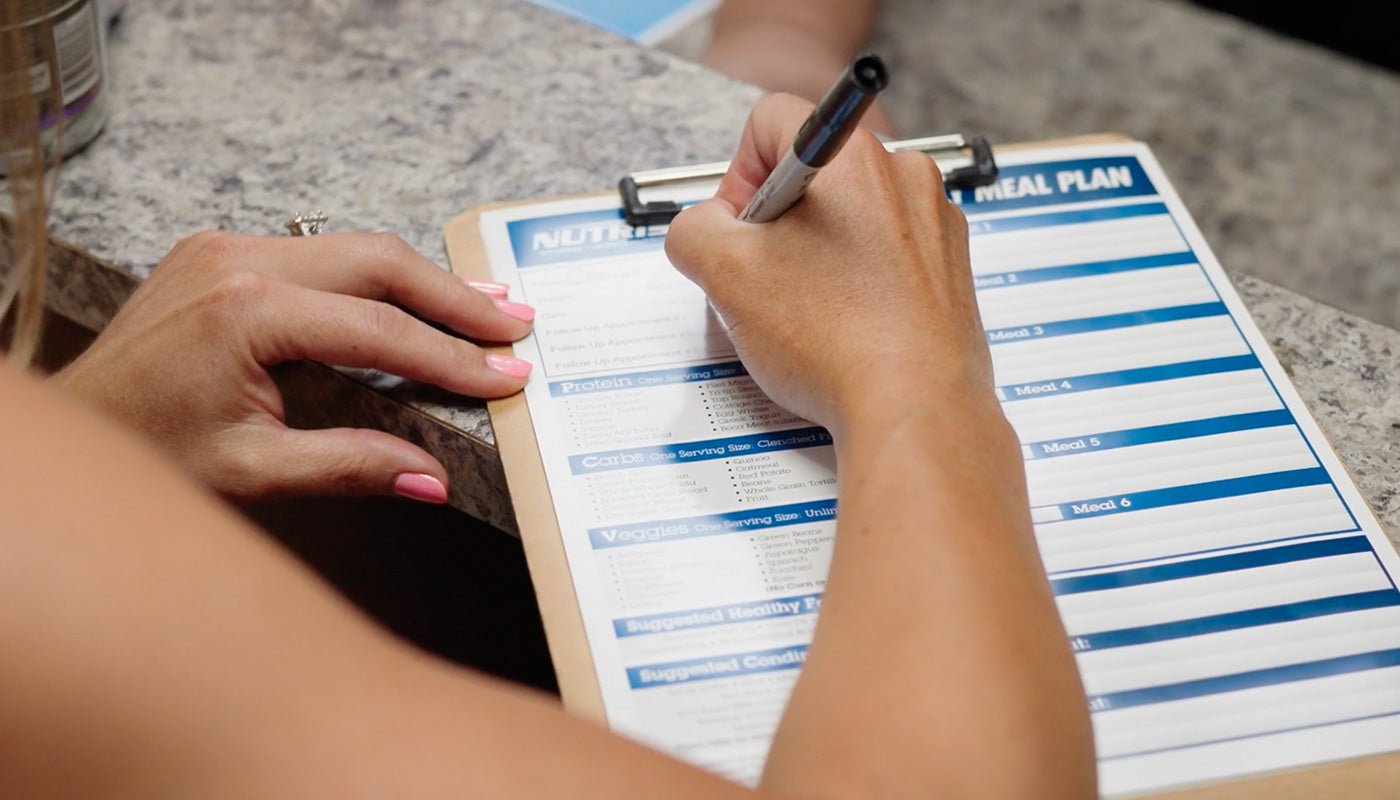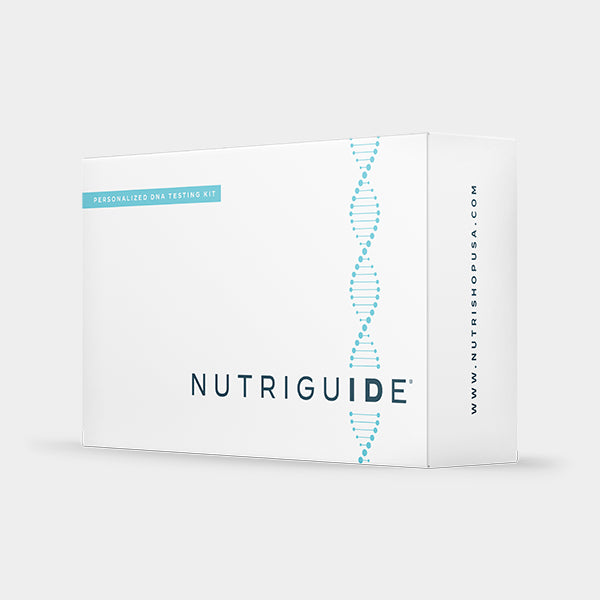Lack of sleep can lead to hormonal imbalances, compromised immunity, and difficulty coping with stress. However, finding more time to sleep between life demands, work, and training may seem impossible. The value of sleep, however, is not just measured in duration. Instead, improving sleep quality can offer valuable wellness solutions. Keep scrolling to discover three quick fixes to enhance your sleep quality.
Option 1: 3-Minute Yoga Routine
Yoga poses that include spine flexion or rotation can help rebalance your nervous system after a stressful day. Try each of the following poses to create your wind-down routine before bed. Allow your muscle tension to melt into each pose as you breathe in through your nose and out through your mouth six times before moving to the next pose. Feel free to modify, add, or subtract poses to complete your bedtime yoga practice.
Knees To Chest
- Begin lying on your back.
- Hug both knees toward your chest.
- Hold and breathe.
Spinal Twist
- Begin lying on your back.
- Bend your knees ~ 90 degrees, but keep your feet on the floor.
- Allow both knees to rotate toward one side. Allow your pelvis to rotate to face the side of the room. It is OK if a foot comes off the floor as you twist.
- Try to keep your shoulder blades on the ground so your chest faces the ceiling. It may help to stretch your arms out to your sides to create a more grounded base of support.
- Hold and breathe, then repeat on the other side.
Wide-Leg Child’s Pose
- Begin by kneeling with both knees on the ground. Your knees should be under your armpits. Place your feet close together.
- Lower your hips to sit on your feet.
- Reach forward as you bring your chest toward your thighs.
- Hold and breathe.
Option 2: Foam Rolling
Foam rolling to enhance sleep quality takes 3 – 30 minutes, depending on how many regions and spots you decide to focus on in a session. While it might seem tempting to commit to 30 minutes of foam rolling each night before bed, beginning with 3 minutes daily will offer a more consistent sleep quality.
Foam rolling can help activate sensors in your tendons that signal your muscles to relax. This muscle relaxation promotes stress relief, which can enhance sleep quality. Instead of continuously rolling, use the rolling motion to scan a muscle region for tender spots (sometimes called trigger points). Once you find a tender spot, hold on that spot. Breathe deeply, allowing your tension to gradually melt as the roller sinks into the spot. Hold for six breaths before moving to the next spot. For each body region, pick one to three spots to release, then move to the next spot. Try the roller release technique on the following regions:
Chest
- Place the roller on the floor.
- Lie face down on the roller. The roller should be parallel to your torso.
- Scan across the front of your chest by rolling left and right to find your tender spots.
- Pick and hold one to three tender spots for six breaths each.
Back
- Place the roller on the floor.
- Sit on the floor, about a foot away from the roller. The roller should be perpendicular to your torso.
- Carefully lower your upper back onto the roller.
- Support your head and neck with your hands.
- Scan up and down your spine by rolling toward your head and tailbone to find your tender spots.
- Pick and hold one to three tender spots for six breaths each.
Glutes
- Place the roller on the floor.
- Sit on top of the roller.
- Cross your right ankle onto your left thigh in a figure 4 position.
- Rock your pressure onto your right gluteal area.
- Use your hands on the floor to support your body as you scan the back of your hip for tender spots.
- Pick and hold one to three tender spots for six breaths each.
Quads
- Place the roller on the floor.
- Lie face down on the roller so the fronts of your thighs are on it. The roller should be perpendicular to your thighs
- Support your upper body on the floor with your elbows as if you were about to do a plank.
- Scan your quads for tender points by rolling up and down your quads.
- Pick and hold one to three tender spots for six breaths each.
Hamstrings
- Sit on the floor with your legs stretched out in front of you.
- Place the roller under the backs of your thighs. The roller should be perpendicular to your thighs.
- Support your upper body by placing your hands behind you on the floor.
- Scan your hamstrings for tender points by rolling up and down the back of your thigh region.
- Pick and hold one to three tender spots for six breaths each.
Calves
- Sit on the floor with your legs stretched out in front of you.
- Place the roller under your calves.
- Support your upper body by placing your hands on the floor next to your thighs.
- Scan your calves for tender points by rolling up and down the back of your calf region. Try turning your toes inward and outward to find more spots.
- Pick and hold one to three tender spots for six breaths each.
Feet
- Put the roller on the floor.
- Stand near a stable surface so you can hold on for balance.
- Place one foot on top of the roller.
- Scan the sole of your foot for trigger points by rolling the sole of your foot back and forth on the roller.
- Pick and hold one to three tender spots for six breaths each.
- Repeat on the other side.
Option 3: Dietary supplements
Research has shown that some dietary supplements may help support your sleep quality. These include melatonin, valerian root, magnesium, and glycine.
Melatonin is a hormone naturally produced by the body, but when supplemented before bed, it may improve sleep quality. Typical dosing is 3-10 mg daily before bed. You can get melatonin at any Nutrishop store, or have it shipped to you.
Valerian root is a plant-based herbal supplement native to Asia and Europe. It has grown in popularity across the world. While there are small short-term (30-day) studies suggesting a dosage of 530 mg daily, long-term and large studies have yet to be conducted.
Magnesium is a mineral naturally found in foods like dark chocolate, nuts, bananas, legumes, green leafy vegetables, and some dairy sources. When supplemented before bed, it may promote muscle relaxation. The daily reference intake for magnesium is 420 mg for men and 320 mg for women. Daily reference intakes are set by the Institute of Medicine based on current scientific data. Quantities represent total daily intakes from food and supplement sources combined. Nutrishop has a new Magnesium Complex you can order online or pick up at a local store.
Glycine is an amino acid, naturally high in protein sources such as most meats, bone broth, and dairy products. Vegetarians can obtain glycine from beans, nuts, and seeds. Supplementation has led to numerous reports of people feeling like they had a more restful night’s sleep. A typical dose is up to 0.8 grams/kg body weight, taken daily. Many protein powders contain glycine. Check yours to see if you may already be including this supplement. Looking for a new protein flavor? Try these powders and bars.
Overall Supplement Use
As always, if you are pregnant, nursing or have medical conditions, it is always best to speak with a registered dietician or primary care provider who can assist with nutritional planning and monitoring.
Next Steps
Now that you have explored quick fixes that enhance sleep quality, give one a try. Begin with the one that fits into your lifestyle. Different strategies work for different people, so if you don’t feel quick results within a week, try a different strategy.
-----------------------
About the Author: Dr. Meredith Butulis, creator of the ISSA Fitness Comeback Coach Certification (online), is a Sports Medicine Physical Therapist, NSCA Certified Strength and Conditioning Coach, ACSM Certified Exercise Physiologist, NASM Certified Personal Trainer, and Precision Nutrition Certified Nutrition Coach in practice since 2002. She consistently walks the talk as a fitness, physique, and OCR world-level competitor and lifestyle transformer since 2006, celebrating many wins along the way. Want more total fitness lifestyle inspiration and interaction? Follow Dr. Meredith on Instagram @Dr.MeredithButulis or join the free “Fitness Focus Fuel” Facebook Group.








